Aluminum Overcast (Pic. Heavy)
Posted: Wed May 30, 2012 9:54 pm
I recently came across these photos that I took a few years ago.
A B17 bomber, on the way to the annual airshow in Oshkosh Wisconsin, stopped by at our local airport.
I don't remember how I heard about it but my boss gave me the afternoon off to go see it.
This was an aircraft that had been totally redone. The metal work, paint, cockpit furniture, etc all looked brand new. It was a rare treat to be able to crawl around inside it and touch everything.
A B17 "Flying Fortresss" bomber was crewed by 10 airmen. Initially it was hoped that their armament alone would protect them as they flew on their missions. This is a late model B17G. Bombers like this flew 1000 bomber raids over the Third Reich during WW2. The crew consisted of ten men. The aircraft was armed with twelve fifty caliber machine guns. Even that wasn't enough to protect them from the defending German fighters. Eventually they had to be escorted by fighters to protect them but they still took losses. About 45,000 aircrew gave their lives in B17 raids over Europe. An Apalling sacrifice!
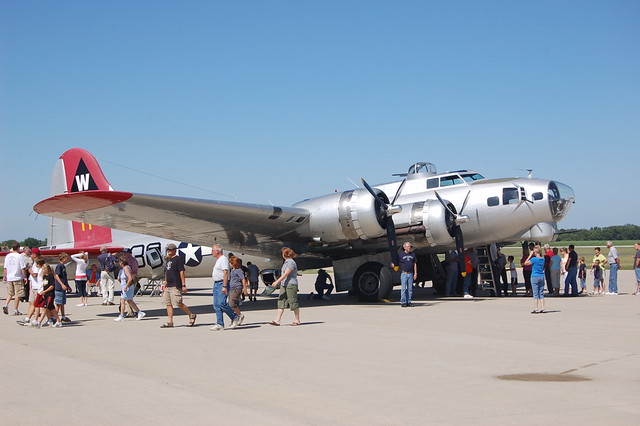
The Boeing B17G Flying Fortress "Aluminum Overcast"
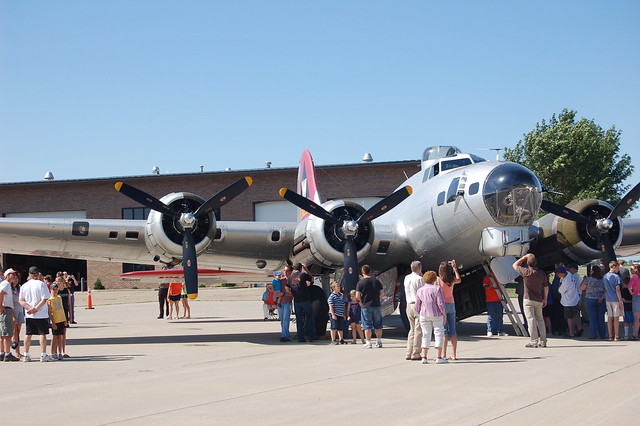
B17G with four Wright Cyclone engines
The four supercharged Wright R-1820-97 Cyclones delivered 1,200 hp (895 kW) each and gave a top speed of 287 mph (462 km/h), cruising at 182 mph (293 km/h). Service ceiling was 35,800 ft. (10,850 m), with a max. range of 3,400 miles (5,471 km)
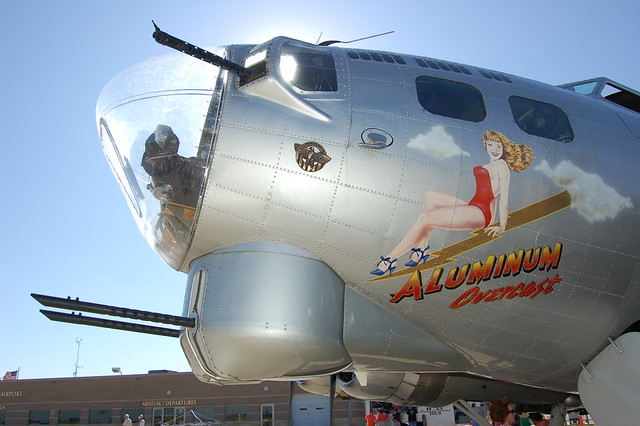
Here one can see the glassed in bombardiers position , the chin turret and the cheek guns
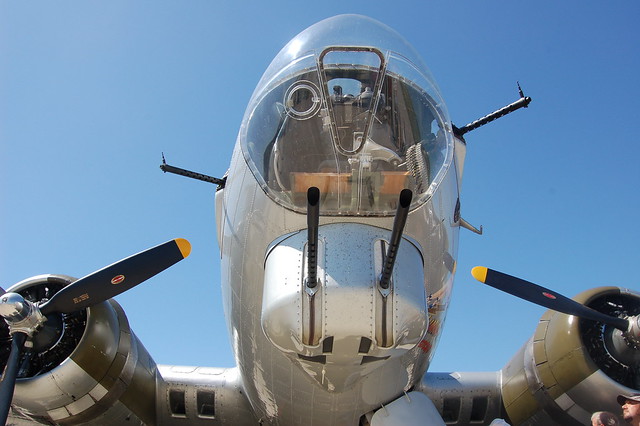
The chin turret, with its two .50 caliber machine guns, was added to the G model of the B17 to defend against head-on attacks by Luftwaffe fighters.
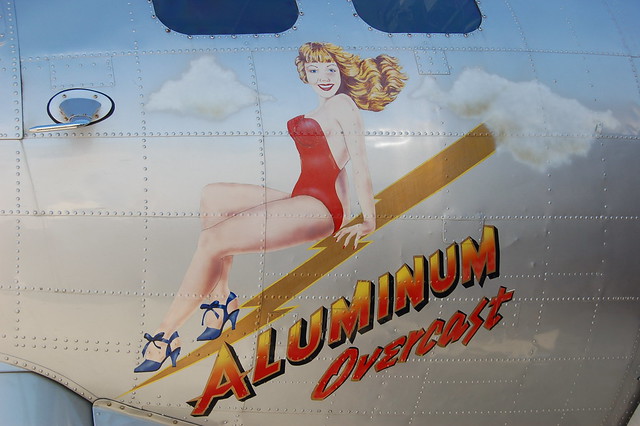
In WW2, it was common for crews to paint pin-up girls on their aircraft
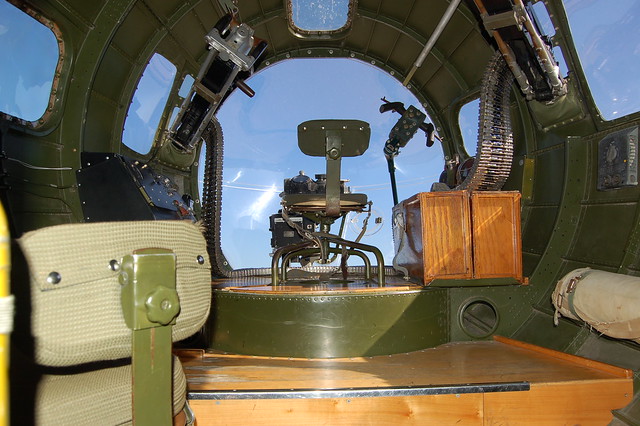
The bombardiers position showing the two cheek guns and the famous Norden bombsight.
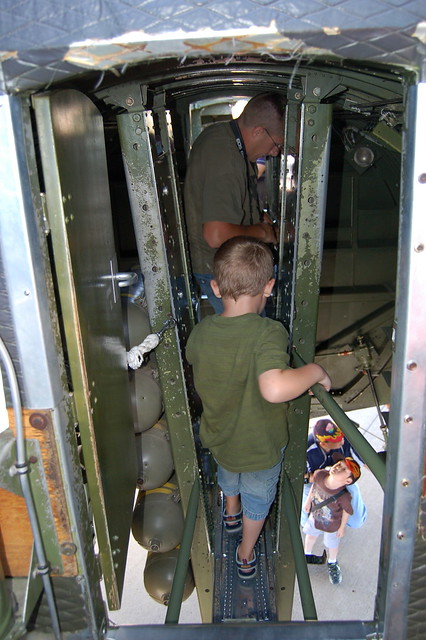
The catwalk in the bomb bay. This was the only way for crew member to cross from the front of the plae to the back and vice-versa. I'm sure it was a truly daunting task when the bomb bay doors were open as the walkway is mere inches wide.
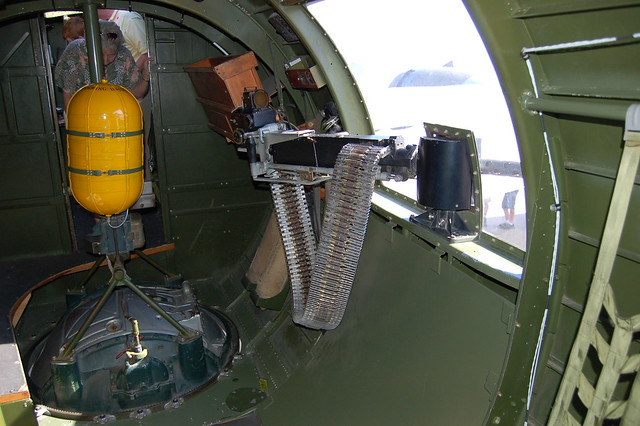
The waist gunners position. The top of the belly turret can be seen.
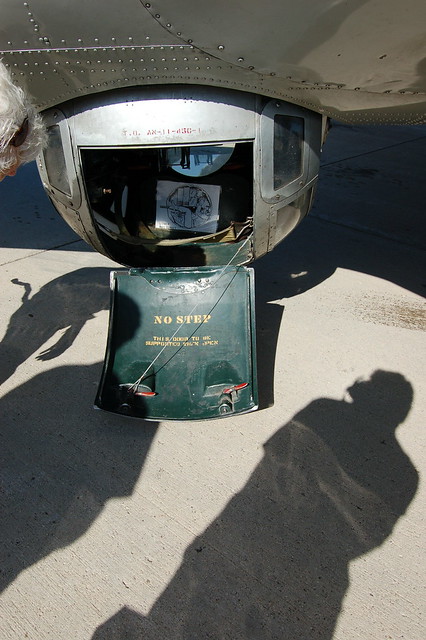
This is the belly turret on the B17. A very tight squeeze!
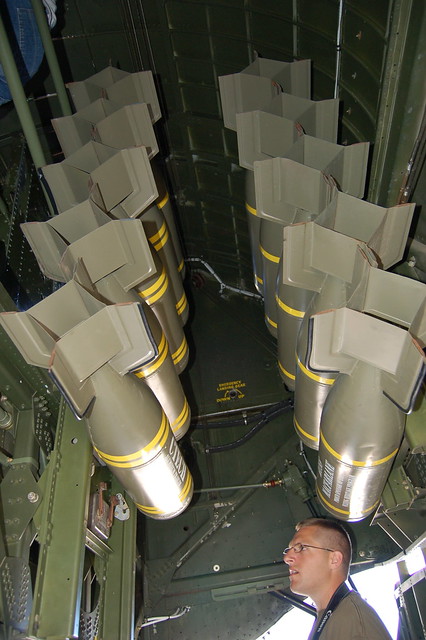
One side of the bomb bay
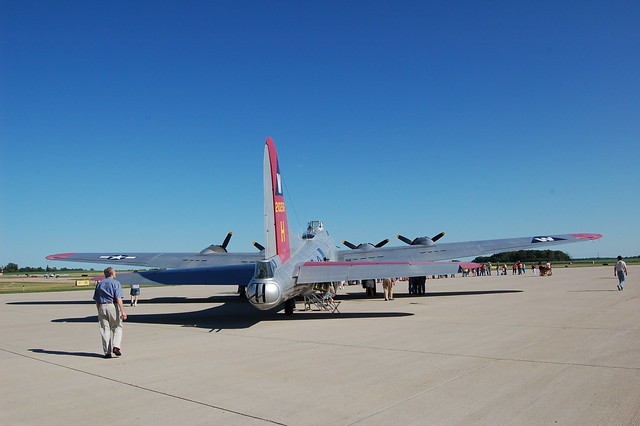
The rear view
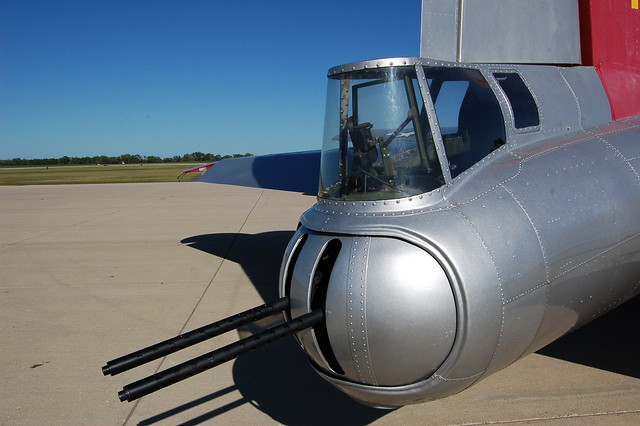
The tail gunners position; the sting in the tail!
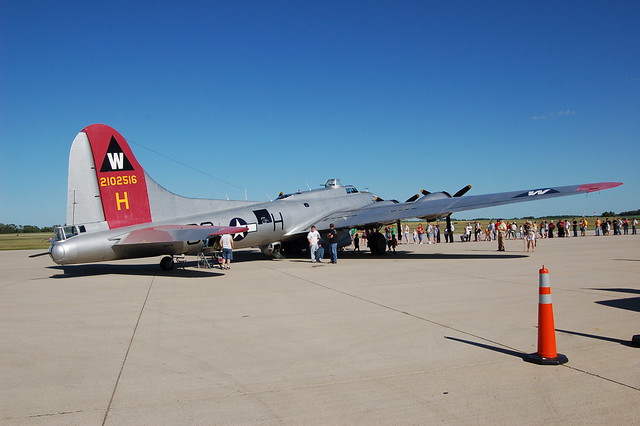
If you would like to see larger photos, you can view them Here
A B17 bomber, on the way to the annual airshow in Oshkosh Wisconsin, stopped by at our local airport.
I don't remember how I heard about it but my boss gave me the afternoon off to go see it.
This was an aircraft that had been totally redone. The metal work, paint, cockpit furniture, etc all looked brand new. It was a rare treat to be able to crawl around inside it and touch everything.
A B17 "Flying Fortresss" bomber was crewed by 10 airmen. Initially it was hoped that their armament alone would protect them as they flew on their missions. This is a late model B17G. Bombers like this flew 1000 bomber raids over the Third Reich during WW2. The crew consisted of ten men. The aircraft was armed with twelve fifty caliber machine guns. Even that wasn't enough to protect them from the defending German fighters. Eventually they had to be escorted by fighters to protect them but they still took losses. About 45,000 aircrew gave their lives in B17 raids over Europe. An Apalling sacrifice!

The Boeing B17G Flying Fortress "Aluminum Overcast"

B17G with four Wright Cyclone engines
The four supercharged Wright R-1820-97 Cyclones delivered 1,200 hp (895 kW) each and gave a top speed of 287 mph (462 km/h), cruising at 182 mph (293 km/h). Service ceiling was 35,800 ft. (10,850 m), with a max. range of 3,400 miles (5,471 km)

Here one can see the glassed in bombardiers position , the chin turret and the cheek guns

The chin turret, with its two .50 caliber machine guns, was added to the G model of the B17 to defend against head-on attacks by Luftwaffe fighters.

In WW2, it was common for crews to paint pin-up girls on their aircraft

The bombardiers position showing the two cheek guns and the famous Norden bombsight.

The catwalk in the bomb bay. This was the only way for crew member to cross from the front of the plae to the back and vice-versa. I'm sure it was a truly daunting task when the bomb bay doors were open as the walkway is mere inches wide.

The waist gunners position. The top of the belly turret can be seen.

This is the belly turret on the B17. A very tight squeeze!

One side of the bomb bay

The rear view

The tail gunners position; the sting in the tail!

If you would like to see larger photos, you can view them Here